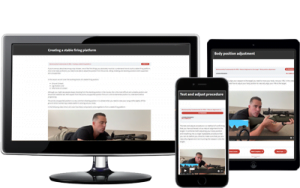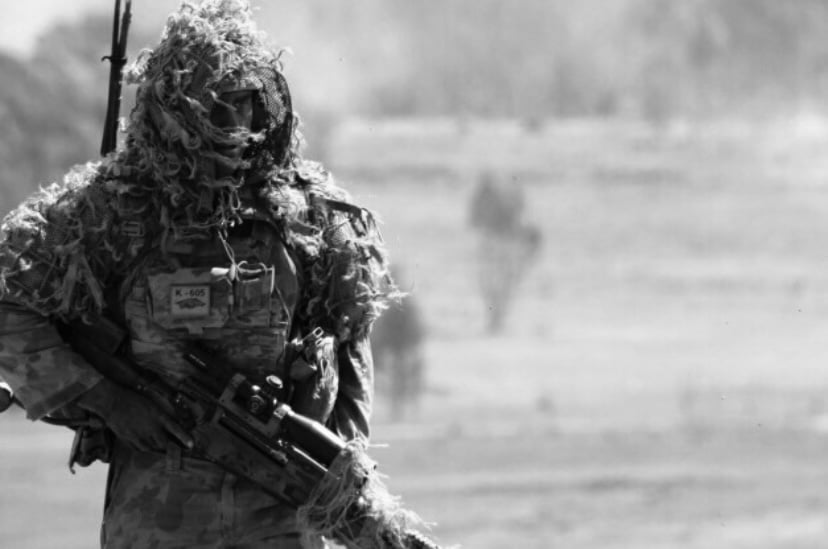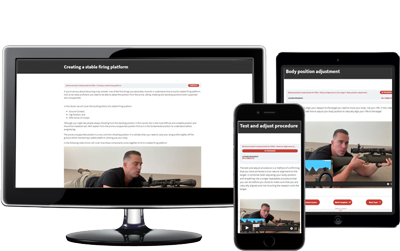No products in the cart.


Firearm training is an essential aspect of being a responsible gun owner, law enforcement officer, or military personnel. Traditional methods of training, like using live rounds, are not only costly but also pose significant risks to individuals. Fortunately, firearm training simulators have emerged as a viable alternative, offering realistic training scenarios without exposure to harm or environmental factors that can hinder learning.
Using a firearm training simulator comes with several advantages, including:
Perhaps the most significant benefit of using a simulator is that it provides a risk-free environment where trainees can get hands-on experience with firearms without the dangers associated with live ammunition. This feature ensures that even novice users can perfect their skills in a safe and controlled environment.
Moreover, using a simulator eliminates the risk of accidents and injuries that can occur during live fire training exercises. Trainees can learn how to handle firearms safely without the fear of causing harm to themselves or others. This level of safety is especially important for law enforcement agencies and military organizations, where firearms are used daily.
Simulators are relatively affordable, making them ideal for organizations that do not have large budgets dedicated to firearm training. Additionally, there’s no need to procure ammunition or a shooting range, meaning that organizations can save a lot on cost.
In fact, using a simulator can be up to 75% cheaper than traditional live fire training. This cost-effectiveness makes it possible for organizations to train more people, more frequently, and with better results.
Simulators provide customizable training scenarios that are designed to meet the needs of specific individuals or organizations. This feature allows trainees to learn real-world skills through various exercises, enhancing their ability to operate while under pressure.
For example, law enforcement agencies can use a simulator to recreate real-life scenarios, such as hostage situations or active shooter incidents. This type of training prepares officers to handle high-stress situations and make quick decisions that can save lives.
Using a firearm training simulator provides immediate feedback and performance analysis, enabling trainees to learn from their mistakes and improve their skills. This feature is particularly useful for organizations with several trainees, as instructors can use the feedback data from the simulator to identify areas that need improvement.
Trainees can see how they perform in real-time, allowing them to adjust their techniques and improve their accuracy. This type of feedback is not possible during live fire training, where instructors may not be able to see every shot or provide immediate feedback to each trainee.
In conclusion, using a firearm training simulator is an excellent way to train individuals and organizations on firearm safety and operation. With its safety advantages, cost-effectiveness, customizable training scenarios, and immediate feedback, a simulator can provide a comprehensive and effective training experience for all skill levels.
Firearm training simulators have become increasingly popular in recent years due to their ability to provide a safe and controlled environment for trainees to practice their skills. There are various types of firearm training simulators available, each with its own unique features and benefits.
Virtual reality simulators are one of the most advanced types of firearm training simulators available. These simulators use cutting-edge technology to create a highly immersive 3D environment that mimics real-life shooting scenarios. The user wears a VR headset and uses a replica firearm that’s connected to a computer that simulates firing. The system provides realistic feedback, such as recoil and sound effects, to make the experience as lifelike as possible. This type of simulator is ideal for organizations that want to offer trainees a highly realistic experience.
Virtual reality simulators can be used to train individuals in a variety of scenarios, such as active shooter situations, home defense, and self-defense. They can also be used to train law enforcement and military personnel in tactical situations.
Laser-based simulators are another popular type of firearm training simulator. These simulators use a modified firearm that emits a laser beam instead of bullets, striking targets that also incorporate sensors that can detect the laser beam. The system calculates and records hits or misses, and provides feedback based on those results.
Laser-based simulators are often used in law enforcement and military training, as they provide a safe and cost-effective way to train personnel in a variety of scenarios. They can also be used by gun owners who want to improve their shooting skills without the expense and hassle of going to a gun range.
Projection screen simulators are another type of firearm training simulator that provide an immersive training experience. These simulators display high-definition videos of a shooting range or other environments, providing a realistic and engaging training experience. The user fires a modified firearm that produces a realistic recoil, and sensors track the accuracy and timing of each shot.
Projection screen simulators can be used to train individuals in a variety of scenarios, such as target shooting, hunting, and self-defense. They can also be used by law enforcement and military personnel to train in tactical situations.
Mobile app-based simulators are a relatively new type of firearm training simulator that enable gun enthusiasts to train anywhere, anytime, using mobile devices such as smartphones and tablets. Users download an app and choose from different scenarios and weapons to train on. These simulators are ideal for gun owners who want to polish their shooting skills without having to visit a gun range.
Mobile app-based simulators are often used by gun owners who want to improve their skills in a safe and convenient way. They can also be used by law enforcement and military personnel to supplement their training.
Overall, firearm training simulators provide a safe and controlled environment for individuals to practice their shooting skills. Whether you’re a gun enthusiast, law enforcement officer, or military personnel, there’s a simulator out there that can help you improve your skills and stay safe in high-pressure situations.
The mark of any high-quality firearm training simulator is its ability to provide realistic training experiences that adequately prepare its users for real-life situations. Here are some key features of a quality simulator:
Military and law enforcement agencies usually use firearm simulators to mimic handling and shooting techniques true to the gun type they use. Therefore, it’s essential for simulators to provide accurate replicas of weapons to ensure that trainees can learn on the type of firearm they will encounter in real life.
For example, if an agency primarily uses a Glock 19, the simulator should have an exact replica of the Glock 19. The weight, balance, and feel of the replica should be the same as the real weapon. This will help trainees get comfortable with handling the firearm and develop muscle memory that will transfer to real-life situations.
Simulators should offer a wide range of scenarios to prepare trainees for real-life situations adequately. The best simulators should incorporate different lighting conditions, varying terrain, and unpredictable scenarios, providing immersive experiences that offer realistic challenges to trainees.
For instance, a simulator could have a scenario where the trainee is in a dimly lit room and has to identify and neutralize a threat. Another scenario could involve an active shooter in a crowded area, where the trainee has to make quick decisions while avoiding innocent bystanders.
Simulators should use accurate ballistic models to ensure that each exercise simulates real-life situations accurately. A quality simulator should take into account factors like bullet drop, deflection, and velocity to provide accurate feedback to the user.
For example, if a trainee is shooting at a target that is 50 yards away, the simulator should take into account the bullet drop and deflection that would occur in real life. This will help trainees understand how to adjust their aim and compensate for these factors.
A quality simulator should offer the option of multiplayer and instructor-led exercises, allowing trainees to practice a range of skills and techniques in interactive and collaborative environments. Multiplayer options allow individuals to practice teamwork, while instructor-led exercises provide trainees with instant feedback and guidance, ensuring that they learn effectively.
For instance, a multiplayer scenario could involve a team of trainees working together to clear a building of threats. The instructor could observe and provide feedback on each trainee’s performance, helping them improve their skills.
Using a firearm training simulator is a great way to learn and perfect your shooting skills without putting yourself and others in harm’s way. With the various types of simulators available in the market, organizations, law enforcement, and military agencies can choose the one that meets their specific needs while providing realistic and safe training.
Additionally, firearm training simulators can also be used by civilians who want to improve their shooting skills. It’s a great way to get comfortable with handling firearms and learn how to use them safely and effectively.

 Find Out More
Find Out More